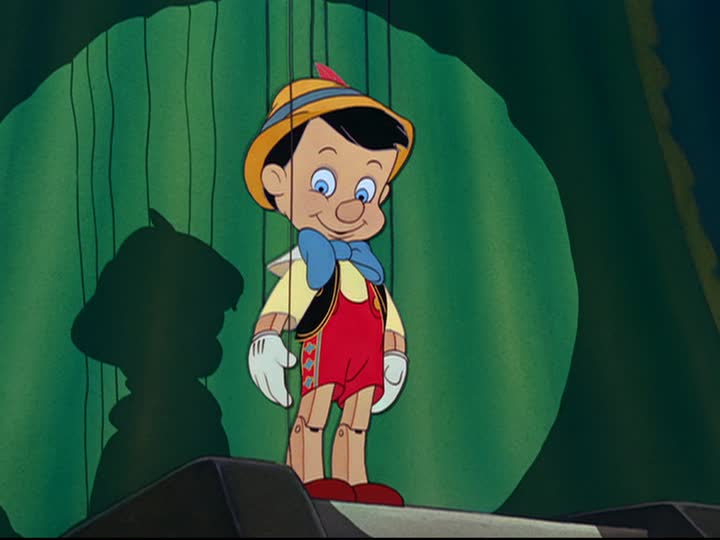Tim here. Today marks the 75th anniversary of Pinocchio, the second feature film released by Walt Disney Studios, and in this animation buff’s eyes, the high water mark in that company’s history (I’m hedging in the interest of good taste. In fact, it’s my pick for the greatest achievement in all of narrative animation). Along with Fantasia, later in 1940, it’s the bright, shining example of what the Disney animators could achieve when given the most resources, support, and artistic freedom that they would ever enjoy.

For these were the days after Snow White and the Seven Dwarfs had made an unfathomable pile of money, and there was no limit to the ambition and creative being exercised at the studio. After the failure of both of the 1940 releases virtually wiped out the company’s savings, Disney would retrench to the safer, narratively and aesthetically conservative movies for which it has remained well-known ever since. For that one short time, though, there was no apparent limit to what Disney could achieve. Pinocchio is a masterpiece in every respect.
It’s one of the handful of movies where the arbitrary narrative logic of folklore and fairy tales (though it’s based on an Italian children’s book, the story artists bent it heavily in a Germanic direction) is a real strength, funneled into a series of confusing anecdotes that are tinged with the crazy incoherence of nightmares. The characters are finely-etched stock figures given warmth and fullness through their designs, with liveliness and personality spilling out of every frame. And all of it is driven by a set of five superlative original songs by Leigh Harline, Ned Washington, and Paul J. Smith that make it, on top of everything else, one of the best original movie musicals ever (“When You Wish Upon a Star”, the film’s anthem, became the company’s theme song and the recipient of Disney’s first competitive feature Oscar).
But above all else, it is a masterpiece of animation unmatched by Disney or any of its competitors and copycats. The complexity of the characters’ acting and expressions is impressively wide-ranging, given how little anatomical realism finds its way into the film. These are cartoon characters, not life studies; but they are most expressive and detailed cartoon characters. If only for its depiction of a petulant, selfish toddler in the form of the adorable black and white kitten Figaro, this would be one of the highest peaks of Disney’s art of creating character through drawings.

It’s also, more to the point, absurdly beautiful. The detail and depth in the art of this film is like nothing else, with painterly techniques of shading and blending that look more like oils than cel animation. There are moments in the film where you can just about see the brush strokes in the backgrounds, which have a richness and lush texture that’s lovely just to look at, even without considering how this all serves to build a world for the story to take place within. Which it also does, and it’s another thing that sets Pinocchio apart from less ambitious animated films: it feels like it takes place in a real, fleshed-out world with corners to explore far away from the specific plot we’re looking at.

This visual splendor is also behind the film’s legacy as one of the most traumatic childhood experiences for generation upon generation of children plunged into its vivid depiction of feverish, hallucinogenic terrors: kidnapping, sea monsters, being caged by an insane man with an axe. The last of which is maybe not a specifically childhood terror, but it fits into the same flow of dreadful things happening for no reason that drives the plot, and has been portrayed by the background artists and animators with the same vividness that marks the rest of the movie. It’s that quality that makes Pinocchio so much more evocatively nightmarish than just about any of the other classic disturbing kids’ movies. It feels real; or if anything, more than real, more detailed and overstuffed than life itself.

That’s the secret to Pinocchio’s longevity. 75 years later, it hasn’t lost any of its powers of sentiment or horror, because it was crafted with such passion and care, fusing over every corner of every frame that can be almost felt as one watches the movie. Uniquely among animated films, it has weight, presence, and physicality. The nights are stuffy and cold, the water is wet, the beds are soft and inviting. Like its titular puppet, it might not be real, but it has the heart and soul of reality, executed with a level of craftsmanship unmatched elsewhere in its medium.